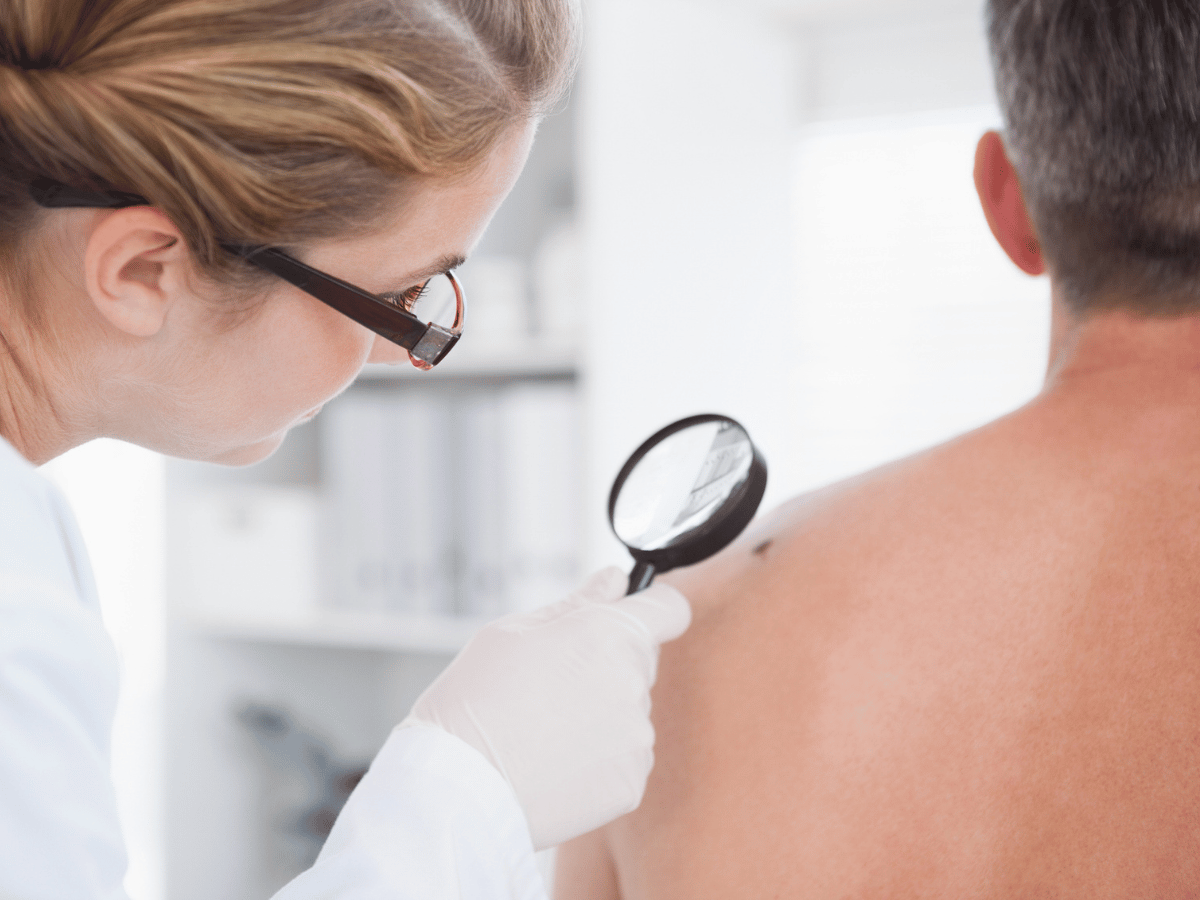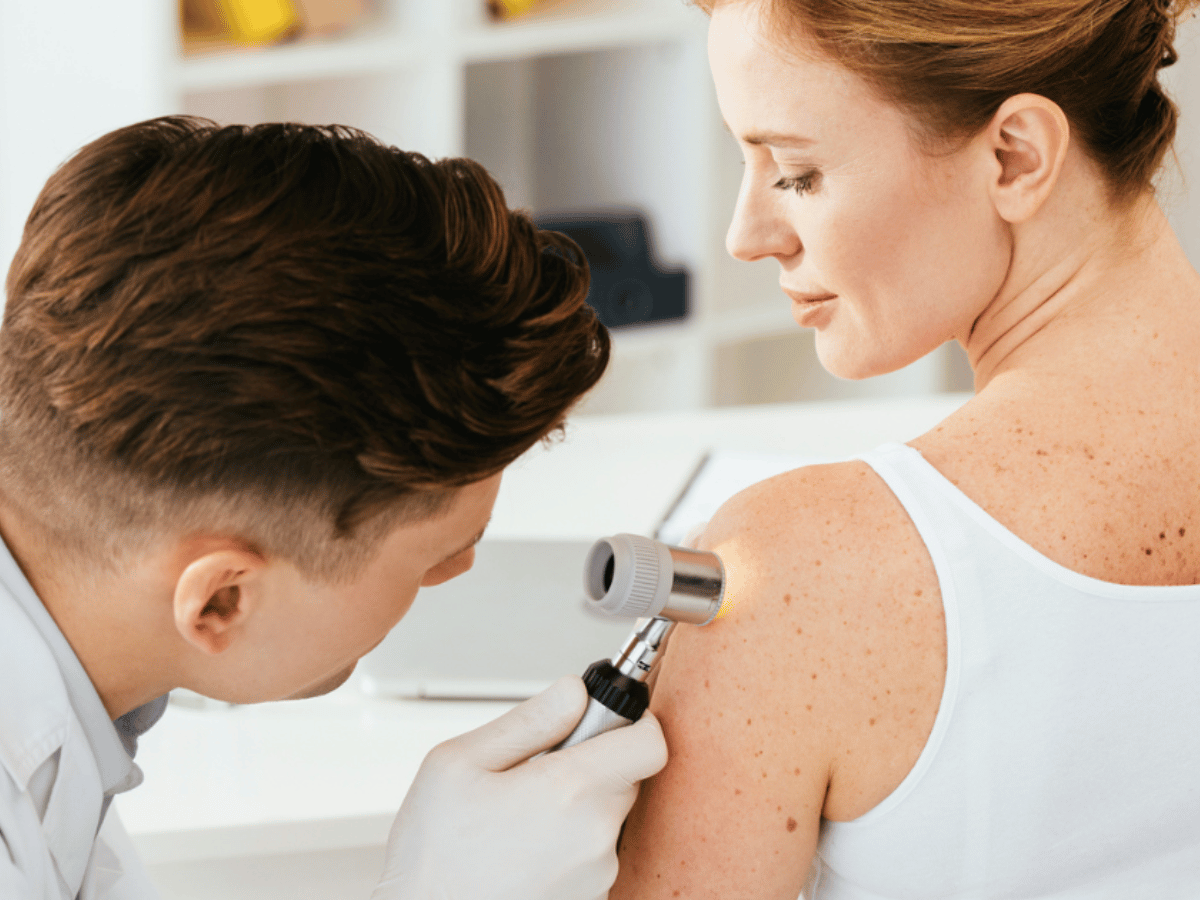How is Skin Cancer Detected?
September 24th, 2024
By Austin Ball
Routine examination of the skin is the most important and effective tool in detecting skin cancer. Almost everyone has moles on their skin, and usually these are harmless. However, a change in a mole’s appearance is a sign that you should see your doctor.
Regularly checking your skin yourself is another important tool in the detection of skin cancer. When checking a mole, use the “ABCDE” rule as a guide to detecting potentially abnormal changes:
- A is for ASYMMETRY: One-half of a mole or birthmark does not match the other.
- B is for BORDER IRREGULARITY: The edges are jagged, scalloped (like the petals of a flower), or blurred.
- C is for COLOR VARIATION: The mole has differing shades of brown, black, or other colors (blue, red or white) within it.
- D is for DIAMETER: The mole is more than 6 millimeters across (i.e. wider than a pencil eraser) or is growing in size.
- E is for EVOLVING: A mole that is changing in size, shape, or color.
Other warning signs include:
- A skin sore that does not heal
- A new skin growth
- Spread of pigment (dark color) from the border of a mole to surrounding skin
- Redness or a new swelling beyond the border
- Itchiness, tenderness, or pain within a mole
- Changes in the surface of a mole (scaling, oozing, bleeding, or the appearance of a bump or nodule)
To learn more about the signs and symptoms of skin cancer, please visit the American Academy of Dermatology’s guide to skin cancer.



